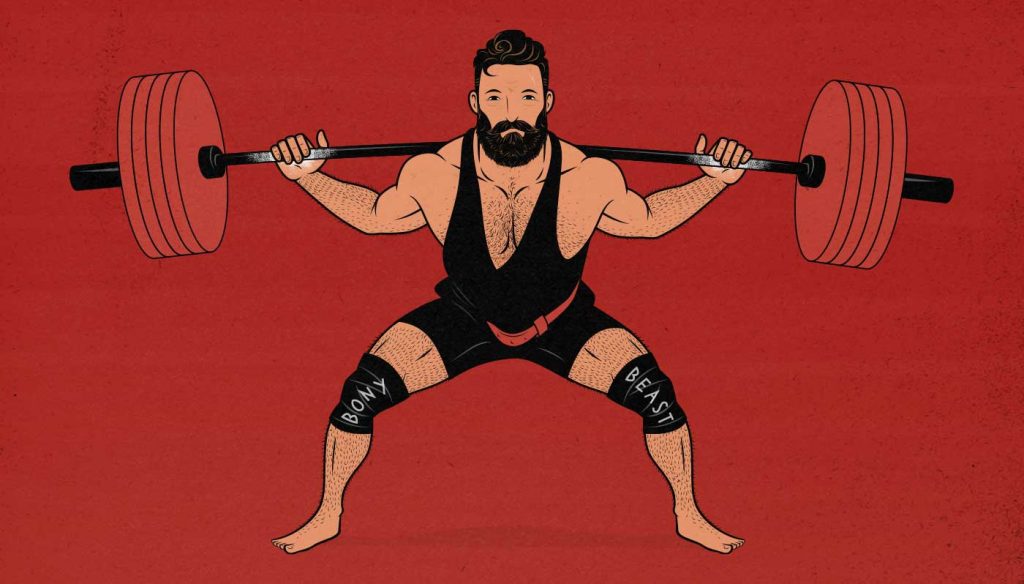
How to Gain Strength
What’s the best way to get stronger? We get this question a lot. CrossFit claims to emphasize functional exercises to develop functional strength. Is functional strength a real thing? And does doing functional exercises really improve our general strength?
Strength training sounds like it would be designed to develop general strength, and it certainly can be. However, it’s usually rooted in powerlifting, which is a more specific type of strength. Strength is more than just how much you can squat, bench, and deadlift for a single repetition.
Next, callisthenics offers mastery over our body weight. If someone is good at push-ups, chin-ups, and planches, they must be strong overall, right? Not necessarily. We also need to be good at lifting and carrying things.
Finally, bodybuilders train to build bigger muscles. They train to look strong, and they are. But they can’t squat as much as powerlifters or do as many chin-ups as callisthenics athletes. Why is that? Are their muscles big but weak?
- What is General Strength?
- The Link Between Muscle Size, Strength & Health
- How Strength & Aesthetics Diverge
- How Well Does Powerlifting Develop General Strength?
- How Well Does Bodybuilding Develop General Strength?
- How Well Does Calisthenics Develop General Strength?
- Should You Test Your 1-Rep Max?
- How Strong Should You Be?
- What’s a Respectable Amount of Strength?
- Summary
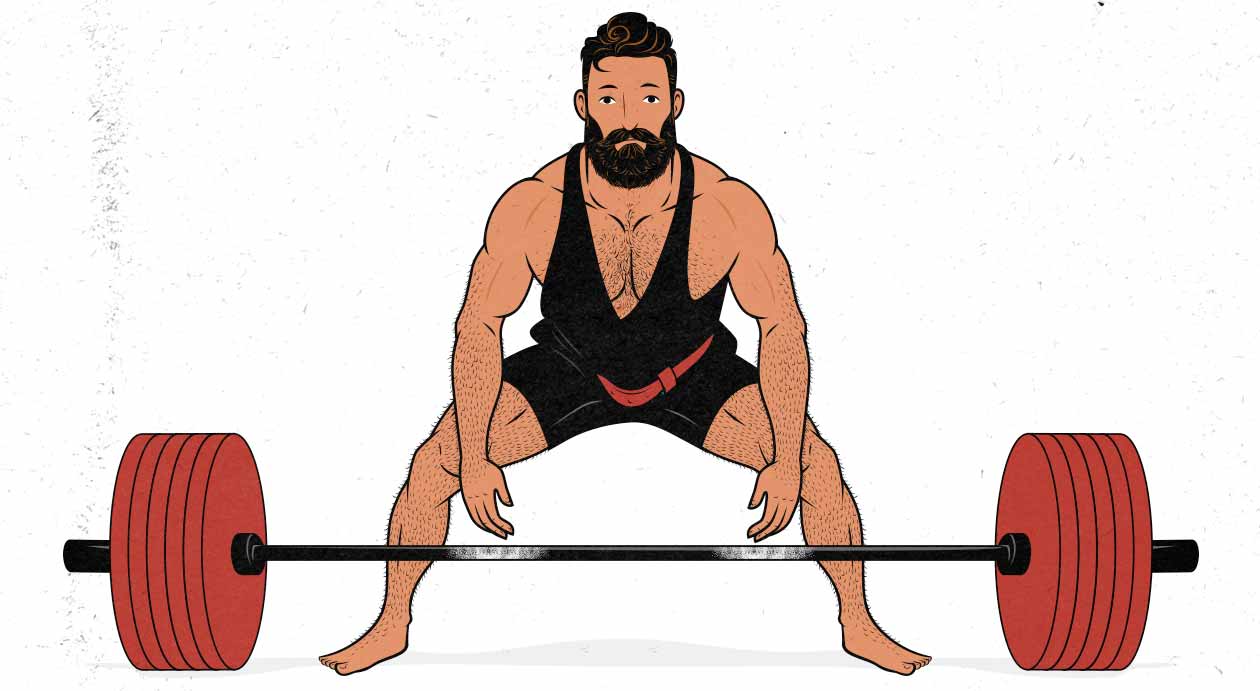
What is General Strength?
General strength means different things to different people. Some people think of strength as simply being able to carry a few bags of groceries up the stairs. In contrast, other people think of general strength as being specific to how much we can squat, bench press, and deadlift for a single all-out repetition (1-rep max). Some people are primarily training to improve their general health and appearance, whereas other people want to be the strongest person they know.
I think one of the better ways to describe general strength is being able to lift heavy things through a large range of motion. If we have strength through a full range of motion in every major movement pattern, then we’ll be strong when we squat even deeper than powerlifters do; we’ll be strong when we lift more than a single repetition; and we’ll be strong on lifts that powerlifting doesn’t measure, such as the chin-up, overhead press, and even the humble biceps curl.
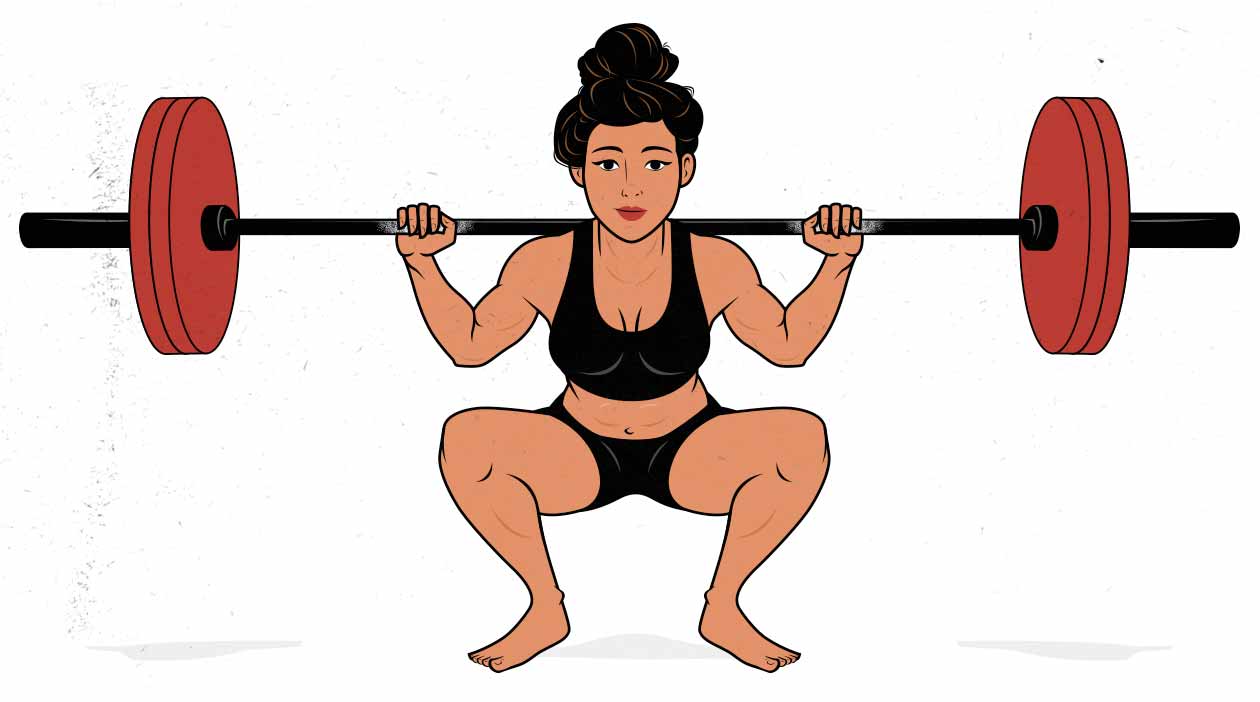
Speaking of the biceps curl, the other trap to avoid is thinking that only compound lifts develop general strength. That’s not the case. If you want to be able to carry something heavy in front of your body, lifts like the deadlift and front squat can be quite helpful, yes, but what about our biceps? Our biceps are often our limiting factor. And so how much we can curl is a good measure of our general strength, too.
The more narrowly we define our strength, the less versatile it represents. But then, on the other hand, the more widely we define our strength, the harder it becomes to measure and improve.
The Link Between Muscle Size, Strength & Health
Our goal with Outlift (and Bony to Beastly and Bony to Bombshell) is to help people become bigger, stronger, healthier, and better looking. If we’re trying to improve in all of those areas, then we can define strength in a way that lines up with our other goals.
- What type of strength training yields the most muscle growth?
- Which type of strength is the most useful?
- Which type of strength improves our health?
- Which type of strength improves our appearance?
The good news is that some of the main factors line up:
- Lifting free weights stimulates maximal amounts of muscle growth and strength gains while also challenging our cardiovascular fitness. Exercise machines and cables can be good for gaining muscle size and strength, too. The trick is to choose good exercises.
- The big compound lifts engage the most muscle mass. They’re great for stimulating muscle growth, taxing our cardiovascular systems, and improving our general strength. Think of pushes, pulls, squats, and hinges. Exercises like push-ups, chin-ups, front squats, and deadlifts.
- A moderate rep range (6–20 reps) is good for gaining strength, but where it really shines is in its effectiveness for stimulating muscle growth. As your muscles get bigger, they’ll grow stronger. When they’re big enough, you can start lifting in a lower rep range (1–8 reps) to train your maximal strength.
The best way to gain strength is to build muscle until you can’t build muscle anymore. That will make you bigger and stronger. At that point, when you’re as big as you can get, you can train your muscles to contract more forcefully. That will make you stronger for your size.
How Strength & Aesthetics Diverge
However, there are some cases where general strength, health, and aesthetics diverge. For instance, a high-bar back squat is one of the very best lifts for improving our general strength and fitness but has almost no impact on a man’s attractiveness (study). Male attractiveness is more strongly linked to our upper-body size and strength.
For another example, building bigger side delts gives men broader shoulders, which looks great, but barely affects our general strength. Our side delts don’t limit our strength on any big movements, training them doesn’t challenge our cardiovascular systems, and the muscles are too small to impact overall body composition.
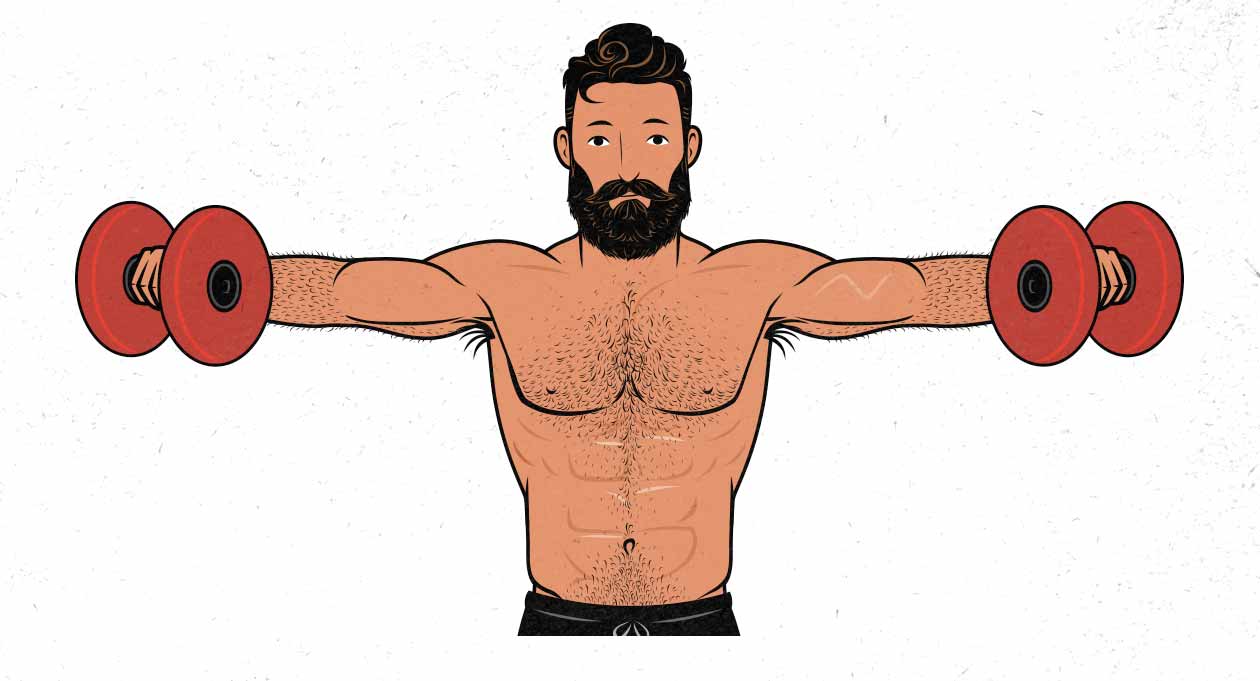
For women, different disparities emerge. Having muscular hips, shoulders, legs, and backs is great for developing general strength, improving health, and giving more of an hourglass physique. Adding in extra hip exercises to build bigger hips is perfectly healthy and further improves general strength, and seems to have a disproportionate effect on a woman’s attractiveness. No contradiction there.
On the other hand, doing extra biceps training may not have a noticeable effect on a woman’s aesthetics. It would, however, make it much easier to carry things around, which is one of the most useful kinds of strength. Or consider neck training. Building a more muscular neck is an important part of general strength, but it may not improve a woman’s appearance.
Finally, for both men and women, most bodybuilding and strength training programs don’t include loaded carries, which are one of the most important aspects of our general strength. Being able to carry weight at our sides, in front of us, in a racked position, and overhead is one of the most important things we can train for. It’s not the best way to improve our muscle size or powerlifting strength, but I’d still argue that it’s an important part of a general strength program.
How Well Does Powerlifting Develop General Strength?
Powerlifting does measure our strength. It doesn’t measure overall strength, though. Instead, it measures our 1-rep max strength on just 3 lifts. Those 3 lifts are highly correlated with overall strength, but only when people aren’t training for the competition.
For example, if you grabbed 3 men from a hunter-gatherer tribe and taught them how to deadlift, the strongest one would be able to bench press the most weight. In that sense, powerlifting is a great test of strength. But as soon as people start training for the competition, the correlation begins to fade.
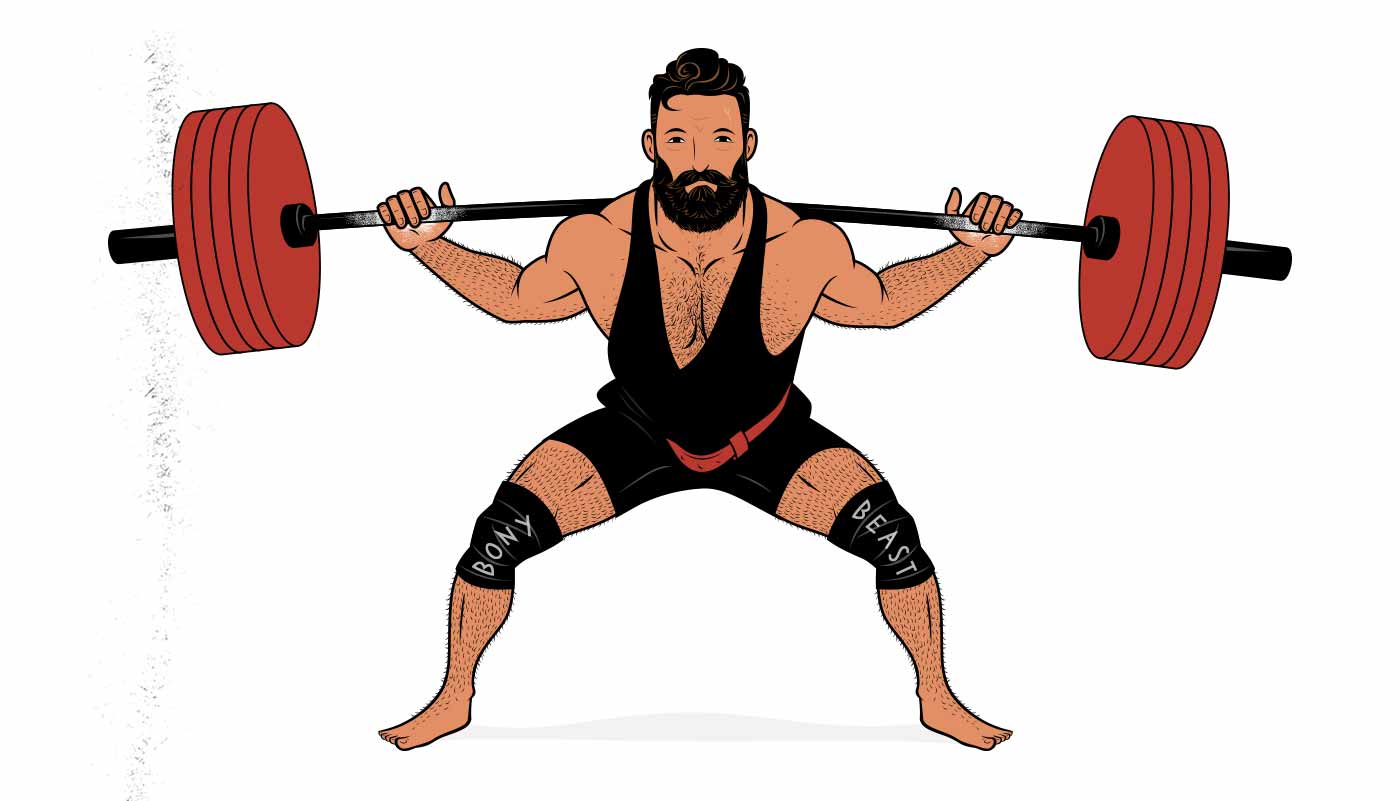
Imagine those 3 tribesmen. The first practices heavy squats, bench presses, and deadlifts. The second does a bodybuilding routine to bulk up. The third becomes a master of push-ups, chin-ups, and planches. The powerlifter will win the powerlifting competition, but that doesn’t mean he’s stronger overall.
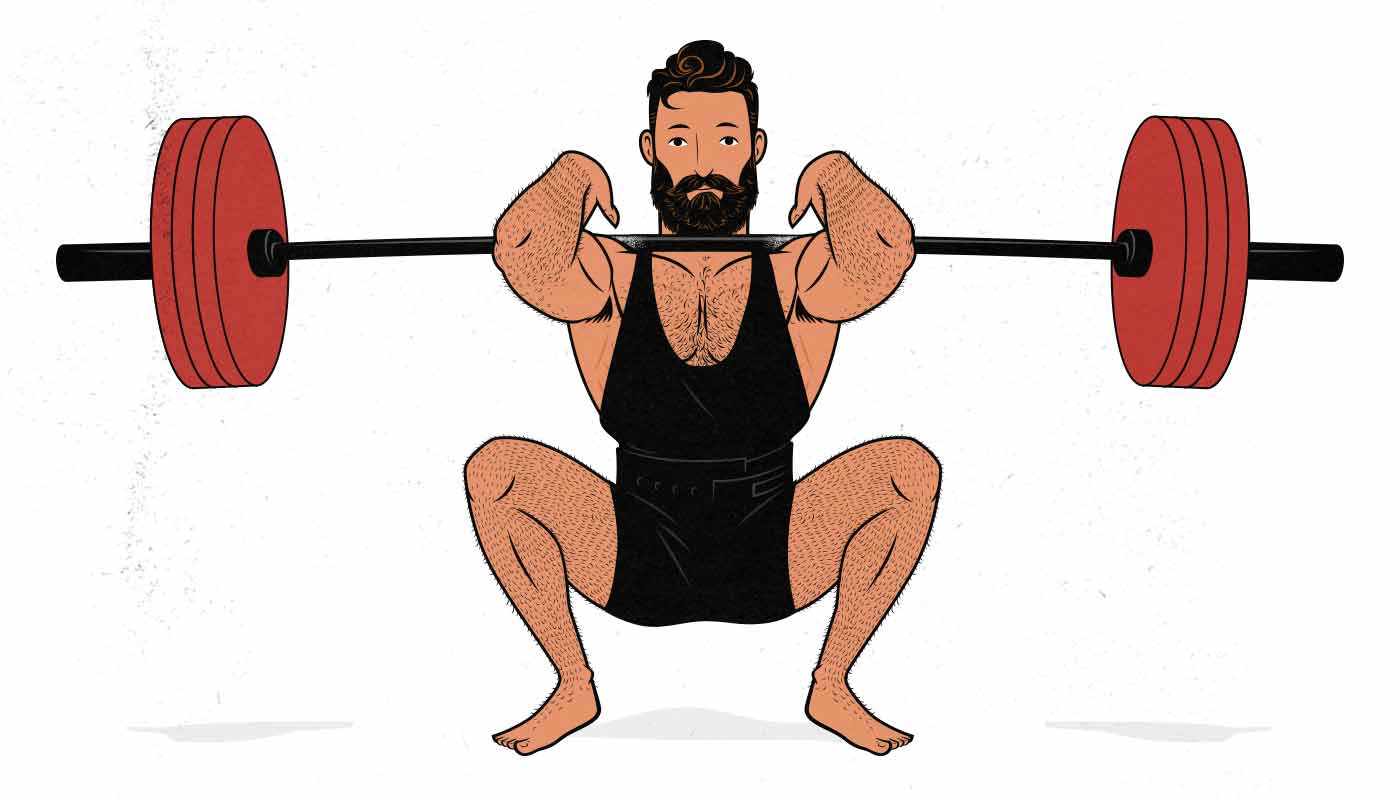
When we move beyond powerlifting, we can improve our training. For example, instead of training the low-bar back squat because it allows us to lift the most weight, we can train the front squat because it’s best for building muscle, improving mobility, and strengthening posture—while arguably being even better for gaining overall strength.
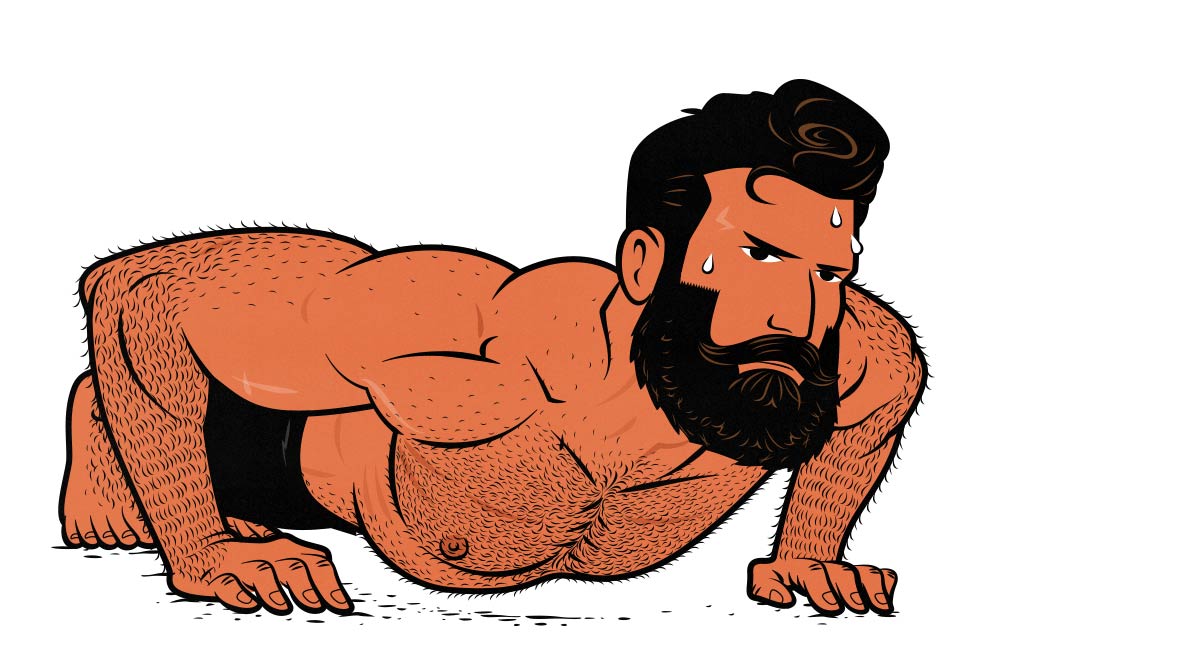
For another example, consider push-ups. They’re just as good as the bench press for building a bigger chest, but they also train your abs and serratus muscles, arguably making you stronger overall.
Powerlifting is great for gaining strength. The squat, bench press, and deadlift are fantastic lifts. But so are push-ups, chin-ups, overhead presses, loaded carries, and much more. And when training those movement patterns, you aren’t limited to the variations that allow you to lift the most weight. You can choose the variations that suit you best.
How Well Does Bodybuilding Develop General Strength?
Bigger muscles are stronger muscles. In fact, even among professional powerlifters, the best predictor of strength is muscle size (study). It’s such an accurate predictor that if you ranked the competitors by muscle size, you’d do a pretty good job of guessing the contest results.
Looking at it from the other side, the strongest recreational lifters tended to look the strongest (study). The best way to build muscle is to get stronger at the exercises you’re doing. The best way to get stronger at those exercises is to build muscle. Most of us know that intuitively. And yet bodybuilders can’t lift as much as powerlifters. How can that be?
Having big biceps means you have strong biceps, but it doesn’t necessarily mean you can carry a lot of weight. After all, to carry something heavy, you need to support that weight with your spinal erectors. It’s easy to imagine a guy with big biceps who can’t pick much weight up off the floor.
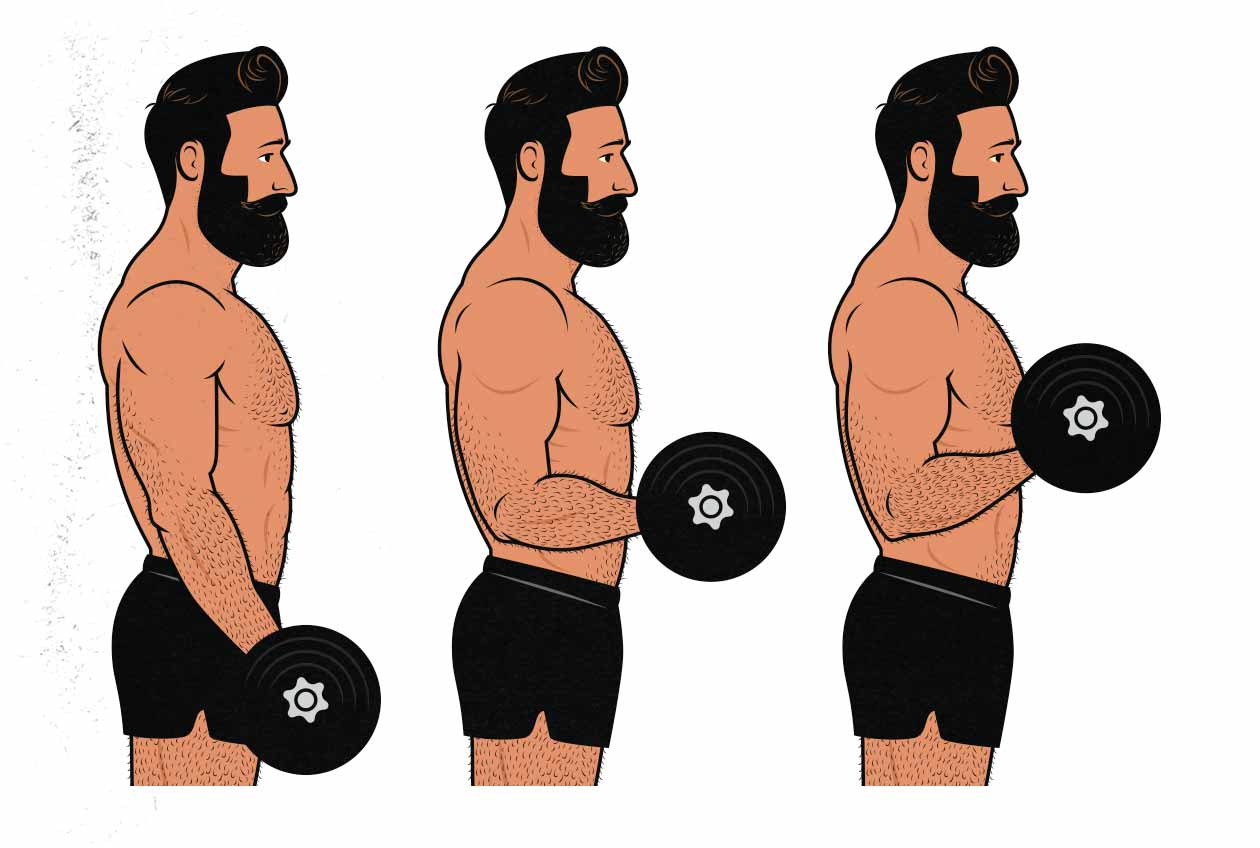
For another example, someone might have big traps from doing barbell shrugs, but if they use lifting straps, they might not have the grip strength to hold that barbell in their hands. If their spinal erectors aren’t strong, they might not have the strength to pick that barbell up from the ground.
So bodybuilders have big, strong muscles. But powerlifters and strongmen tend to have more developed spinal erectors, allowing them to pick up more weight from the floor. Calisthenics athletes tend to have more developed core muscles, allowing them to better control their body weight.

The trick, then, is to build bigger muscles overall. Build a wide chest, broad shoulders, and big biceps, but also train your spinal erectors and core. Along with all your other lifts, get strong at front squats, deadlifts, push-ups, and chin-ups.
How Well Does Calisthenics Develop General Strength?
Calisthenics are great for gaining muscle and strength, especially when the workouts are designed for building muscle. When compared to bodybuilding and powerlifting, calisthenics has some advantages and disadvantages.
On the one hand, push-ups and chin-ups are big compound lifts, they engage a ton of muscle mass, and they help us build strong cores and stabilizer muscles. On the other hand, they don’t train our spinal erectors, so they aren’t very good at helping us carry heavy things.
The best way to train for muscle size and general strength, then, is to combine the best of calisthenics with the best of free-weight training. Do chin-ups and rows, push-ups and deadlifts.
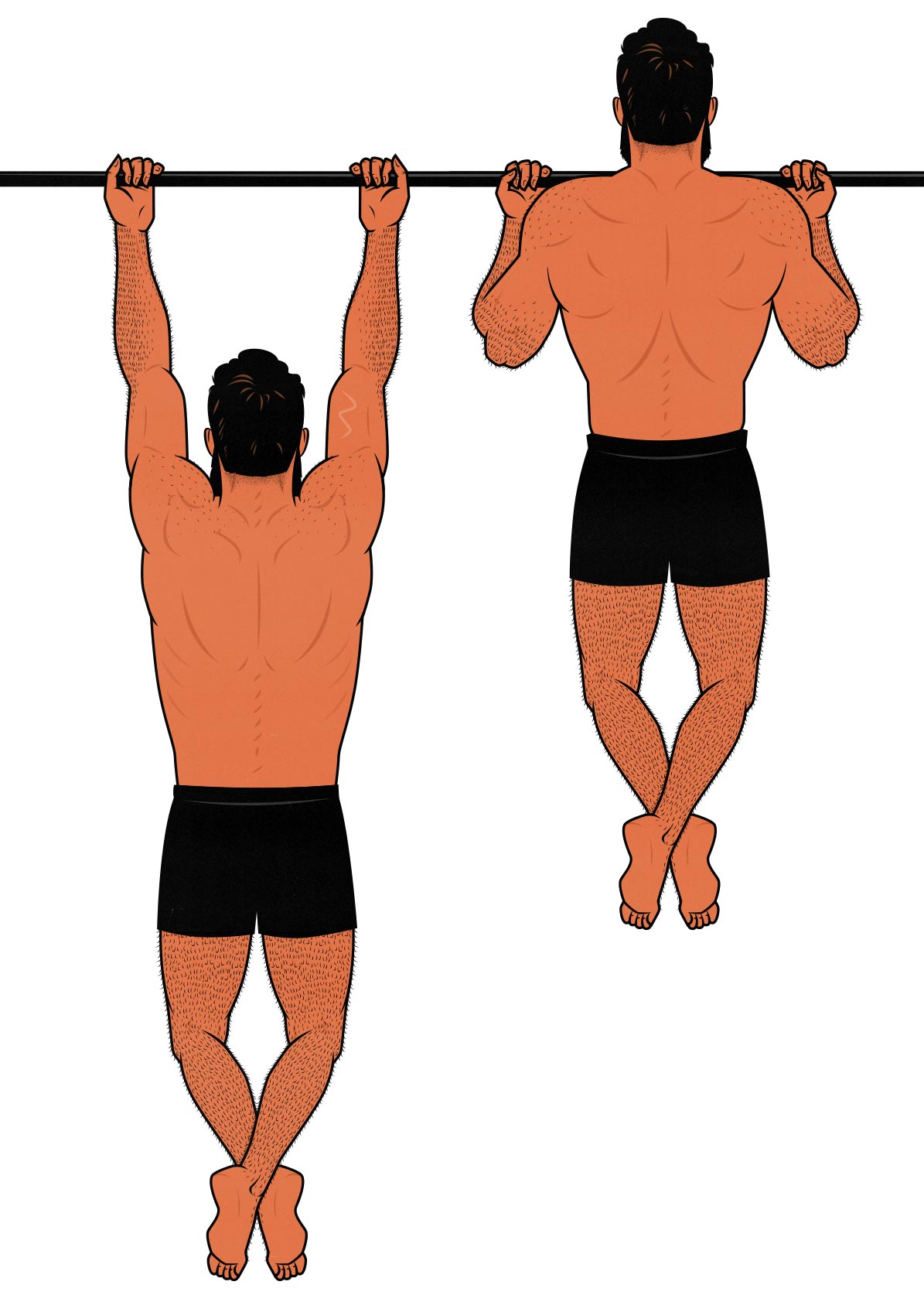
Should You Test Your 1-Rep Max?
Every form of training has a different way of measuring strength. If we measure strength via our 1-rep max (1RM), powerlifters will seem stronger than bodybuilders and calisthenics athletes. But is that fair? Yes and no.
On the one hand, our 1RM is a good measure of our maximal strength. The bigger our muscles are, the more force they can potentially produce, and so the more weight we can lift. But there’s a neurological component to it as well. We need to learn how to fully engage our muscles for one all-out heave. To master that art, you have to train heavy (1–5 reps per set).
On the other hand, training to improve your 1-rep max is about making neurological gains, not muscle gains. If you’re trying to build muscle, it won’t help very much. 1-rep max attempts can also increase your risk of injury. If you aren’t a powerlifter, there isn’t necessarily any need for it.
If you want to test your strength in a more productive and safer way, you could test your Rep Max (RM) instead of your 1-rep max (RM). For instance, if you usually bench press for sets of 10 repetitions, you could test your 10-rep max (10RM) to see how strong you are. That 10RM is a good indicator of your muscle size, general strength, and progress over time.
How Strong Should You Be?
Most of us can develop a healthy amount of strength quite quickly. Within a year or two of progressive overload, eating a good bulking diet, and living a reasonably healthy lifestyle, most of us can get quite strong. Not strong enough to win a powerlifting competition, but strong enough to do everything we could ever want to do outside of the gym.
What’s a Respectable Amount of Strength?
It’s all well and good to be strong enough to carry your groceries home and put your luggage into the overhead bin. But if you lift weights as a hobby, you probably want to be good at that hobby.
Here are some good strength standards for men:
- The bench press: if you can bench 225 pounds for a few reps, most people will find it respectable. If you can bench 315 pounds for a single rep, most men will be jealous. And your wife will probably want to post a video of it online.
- The squat: most people consider a 315-pound back squat to be respectable and a 415-pound back squat to be impressive. Front squats are less well known, but a 225-pound front squat is good, and a 315-pound front squat is great.
- The deadlift: most people consider a 405-pound deadlift to be respectable, especially if you can lift that weight for a few casual reps. Some people are more impressed by conventional deadlifts than sumo deadlifts because it has a larger range of motion and demands more spinal erector strength. (I disagree, but I’m not everyone.)
- The overhead press: doing reps with 135 pounds on the bar is respectable. Lifting 185 for reps or 225 for a single is impressive.
- The chin-up: doing 10 bodyweight chin-ups is respectable. 20 is impressive. So is being able to do reps with 100 pounds hanging from your waist. Or doing chin-ups with one arm.
- The barbell curl: most people won’t care about how much you curl until you can curl 135 pounds, at which point it becomes incredibly impressive.
Here are some good strength standards for women:
- Push-ups: being able to do 10 decent push-ups is respectable, and if you can do 20 push-ups with a full range of motion, it’s impressive.
- Chin-ups: being able to do 1–3 chin-ups through a full range of motion is respectable, and being able to do 5–10 chin-ups is incredibly impressive.
- Squat: being able to squat 135 through a full range of motion for reps is respectable, and being able to squat 225 for a single rep is quite impressive.
- Deadlift: being able to do moderate-rep sets with 135 pounds is respectable, and being able to lift 225 pounds for a rep or two is impressive.
Summary
Making our muscles bigger is the best way to make them stronger, at least until you can’t make them bigger anymore. To do that, focus on getting stronger in a moderate rep range (6–20 reps) on the big compound lifts: squats, push-ups, deadlifts, chin-ups, farmer carries, and their many variations. That will make you bigger and stronger.
When you’ve built as much muscle as you can, you can further improve your maximal strength by training heavier (1–8 reps per set). That’s the best way to make the neurological gains you need to get stronger for your size.

If you want a customizable workout program (and full guide) that builds in these principles, check out our Outlift Program. Or, if you’re still skinny, try our Bony to Beastly (men’s) program or Bony to Bombshell (women’s) program.





Great article and it’s full of very useful information! I always asked myself where is the general strength threshold of: “Son, I’m proud of you!”.
I have a few questions here:
Can a guy like me, that is 181 cm (5′ 11) tall and weight 79 kg (174) reach the “impressive strength level” on the Big 5?
When you train for getting stronger at 10-rep max you always became more muscular or you can just get stronger like when you train for 1-rep max?
Hey Davide, thank you 🙂
I think most of us could develop an impressive amount of strength on at least some of the big lifts if we’re willing to work hard for it. It’s impressive because it’s hard, but these are still numbers that most of us could realistically achieve, at least on the lifts that happen to suit our individual bodies better. Gaining a bunch of strength means building a bunch of muscle, though, so you’ll wind up weighing quite a bit more than 79kg by the time you get there. Most people who can lift that much weigh 200+ pounds. Some people do it while weighing less, but it’s not as realistic for most of us.
Does building a bigger 10-rep max necessarily mean gaining size? Not necessarily. We could improve our technique or learn to exert ourselves better. But of all the rep ranges, it may have the strongest correlation with size. It hasn’t been tested, but it makes logical sense, and so a lot of experts, such as James Krieger, guess that our 10RM is the best rep range for gauging our muscle size. Perhaps more importantly, though, the training we’d do to improve our 10RM is the exact type of training we’d do to gain muscle size. So training for the test is training for muscle size. That’s not the case with powerlifting, where lifters need to go through hypertrophy phases, then strength phases, and then peaking phases. If we’re testing our 10-rep max, we can just go through hypertrophy phases.
Nice article, thumbs up!
I have recently started reading your articles are found them very informative.
I have two questions. First, I have progressed from 5 bodyweight pull ups to 14 at bodyweight of 58kg and gradually built up to weighted pull ups with 22kg external weight for 5RM. Still I don’t see gain in back size despite reasonable strength gains. Bodyweight is also unchanged. Is it normal?
Secondly, due to my anatomy and sensitive knees, I can not do squats with neutral spine and without irritating knees..not even bodyweight squats without weights. Lunges also irritate knees. However, I can deadlift twice bodyweight any day. So, can I switch from squat to snatch grip deadlift for targeting the quads and more of the overall legs development? Thanx.
Hey Farhan, congrats on the progress, man! Going from 5 to 14 pull-ups is amazing!
Is it normal to be able to get stronger without gaining weight or muscle mass? Yes, but your strength gains will eventually plateau. What’s happening is that you’re improving your coordination, learning to exert yourself more forcefully, lifting with better leverage, and, probably, building a small amount of muscle that isn’t easily noticeable. I’d recommend eating in a calorie surplus to gain weight. That way you’re consuming the resources you need to pack on muscle mass 🙂
Is it okay not to squat? Sure. There are lot of ways to work the quads and glutes, ranging from the leg press to split squat variations to leg extensions. Some deadlift variations also work the quads a decent amount, yeah. If that’s how you want to train, I don’t really see a problem with it. I suspect you might be able to find a squat variation that suits you, though, whether that’s goblet squats, front squats, hip-dominant low-bar squats, or a split squat variation. A physiotherapist or strength coach might be able to help you rehab your knees, too. But it’s up to you whether you want to do any of that.
Thanx a lot, Shane, for your time and detailed reply.
Yes I can notice some improvement in my middle & lower traps definition n size after doing these weighted pull ups. I shall include weighted chin ups also…for lats.
Yes you are right, I have tried dumbbells squats, one in each hand, and going deep down, allowing ample knee tracking and keeping the load on glutes during concentric and eccentric part. It has been good, I hope it shall work for me.
My pleasure, man! Happy to help.
Pull-ups and chin-ups work the lats and traps similarly hard. The bigger difference is in biceps stimulation. Chin-ups will be much better for your biceps 🙂
Excellent article. Any thoughts on how best to determine what your own point of diminishing returns is for each major lift?
That’s a good question. It’s tough to answer. I think we go through stages:
1. Newbie gains: You’re learning the lift, improving your coordination, and quickly gaining muscle and strength. You make progress whether you’re bulking or not.
2. Your technique is more stable, gains come slowly from steady increases in muscle mass. You probably only make consistent progress when you’re eating enough food to gain weight.
3. Intermediate gains: Strength plateaus and other issues start interfering with progressive overload. You might need to adjust your routine to tackle specific issues and weak points. Even when you’re gaining weight, progress can be tough.
4. You need specialised approaches and programs to make progress on the lift. The routine is designed to play to your strengths and bring up your weak points. Gaining weight is a necessity. When you stop gaining weight, progress regresses a bit before settling at a slightly lower point.
5. Advanced gains: Even when you’re doing everything right, progress is still slow and inconsistent. You need more experimentation. You run into more problems. You might spend months adding just a few pounds to a single lift. To demonstrate your strength, you might need to peak for it.
What’s cool is that you might get to stage 4, hit a point of steeply diminishing returns, take a break for a while, and then when you come back, you’re able to blast past where you were before.
Some of the issues you run into, such as aching shoulder joints from the bench press, or a sore lower back from the deadlift, might be completely fixable.
I feel like I’m at stage 5 with my bench press, stage 4 with my deadlift, and everything else is still at the lower stages. Newbie gains may only last for a couple months, but it can take many years to get into the deeper stages. Stage 3 can last for a very long time.
So to specifically answer your question, you’ll notice diminishing returns after a few weeks, but you have years of great progress. After that, you’re in great shape, and getting into even better shape is all the more impressive. It’s not frustrating to hit the point of steeply diminishing returns, it’s satisfying. That’s what being strong and fit is. Even just maintaining that can feel great.
Plus, there’s always something new to work on. Right now I’m making newbie gains with jogging.